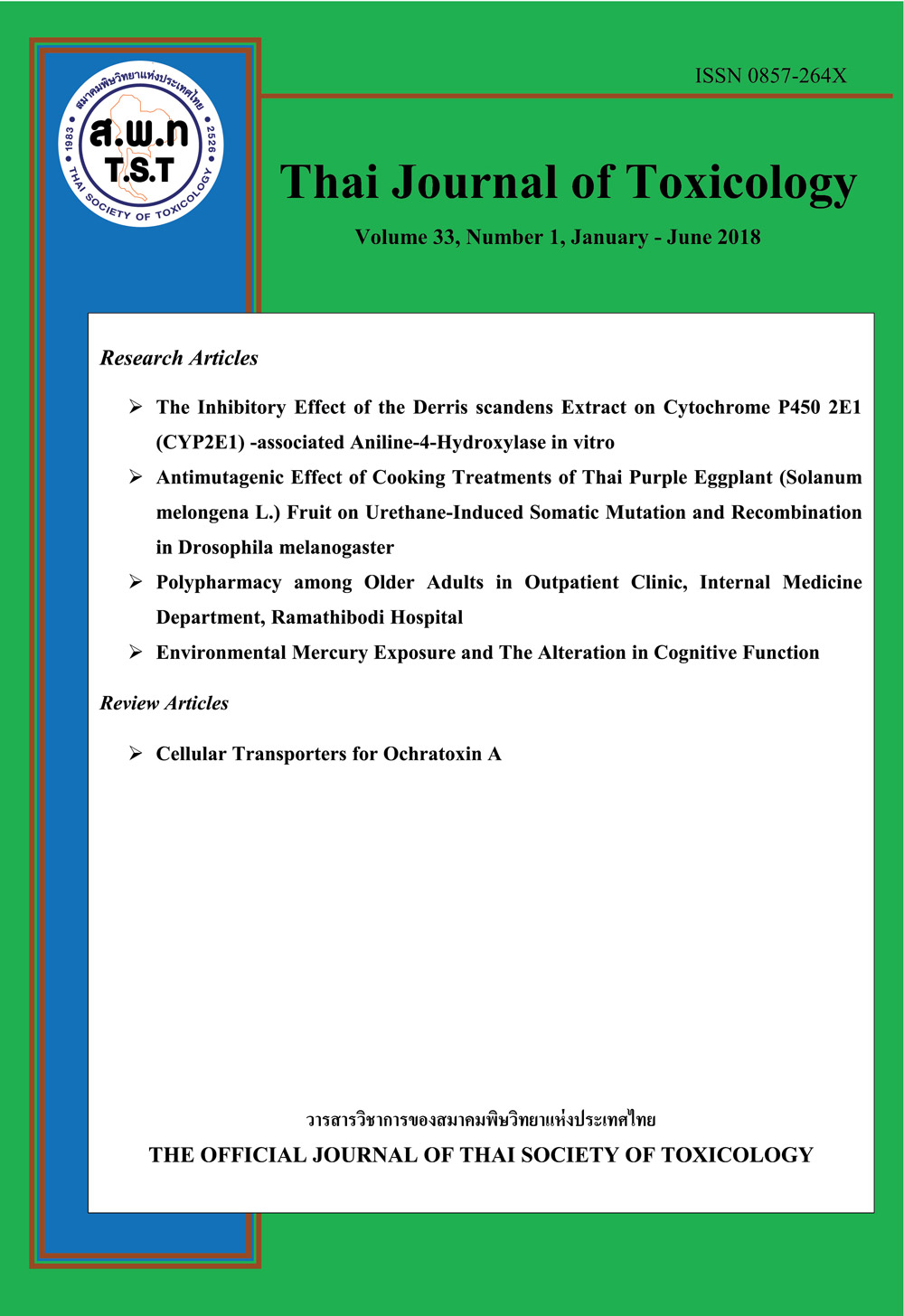การใช้ยาร่วมกันหลายขนานของผู้ป่วยสูงอายุที่รับการรักษาแผนกตรวจโรคผู้ป่วยนอกอายุรกรรมโรงพยาบาลรามาธิบดี
Main Article Content
บทคัดย่อ
การใช้ยาร่วมกันหลายขนานหรือการใช้ยาร่วมกันมากกว่าหรือเท่ากับห้าชนิดขึ้นไป ซึ่งเป็นปัญหาที่พบได้บ่อยในผู้สูงอายุไทย ส่งผลกระทบอย่างมากต่อภาวะทุพพลภาพและนำไปสู่การเสียชีวิต ดังนั้นวัตถุประสงค์การวิจัยสามารถบ่งชี้ ปัจจัยเสี่ยงและปัญหาอันเนื่องจากการใช้ยาที่มีความสัมพันธ์กับการใช้ยาร่วมกันหลายขนานเพื่อเพิ่มความตระหนักแก่บุคลากรทางการแพทย์ในการใช้ยาเพื่อนำไปสู่การป้องกัน และลดการเกิดการใช้ยาร่วมกันหลายขนาน การศึกษานี้เป็นการศึกษาแบบ cross-sectional study ซึ่งมีการแบ่งกลุ่มผู้เข้าร่วมวิจัยออกเป็น 3 กลุ่มตามนิยามอันได้แก่กลุ่ม excessive polypharmacy (ยามากกว่า 9 ชนิด), polypharmacy (ยา 5-9 ชนิด) และ no polypharmacy (ยาน้อยกว่า 5 ชนิด) ผู้เข้าร่วมวิจัย 452 รายอายุมากกว่าเท่ากับ 60 ปีขึ้นไป เข้ารับบริการการรักษาแผนกตรวจโรคผู้ป่วยนอกอายุรกรรม โรงพยาบาลรามาธิบดี ตั้งแต่วันที่ 1 ธันวาคม พ.ศ. 2558 ถึงวันที่ 31 พฤษภาคม พ.ศ.2559 ความชุกการใช้ยาร่วมกันหลายขนานประมาณ 74.8 เปอร์เซ็นต์ ซึ่งการวิเคราะห์ข้อมูลใช้ multivariate multinomial logistic regression analysis เพื่อค้นหาปัจจัยเสี่ยง โดยใช้กลุ่ม no polypharmacy เป็นกลุ่มอ้างอิงพบว่า โรคเบาหวานเป็นปัจจัยเสี่ยงอิสระที่มีความสัมพันธ์กับการใช้ยาร่วมกันหลายขนานมากที่สุด โดยมี (OR 3.61, 95% CI: 1.86-7.02; P < 0.001) จากการศึกษานี้พบว่าปัญหาอันเนื่องจากการใช้ยาที่สัมพันธ์กับการใช้ยาร่วมกันหลายขนานสามอันดับแรก ได้แก่ การเกิดปฏิกิริยาระหว่างยา (91.4%) ใช้ยาที่ไม่จำเป็นหรือไม่มีข้อบ่งชี้ (72.4%) และการใช้ยาไม่เหมาะสม (62.9%) ดังนั้นแพทย์ควรให้การตระหนักกับปัจจัยเสี่ยงเช่นเดี่ยวกันกับการบริหารยาได้อย่างเหมาะสมเพื่อป้องกันการเกิดการใช้ยาร่วมกันหลายขนาน


